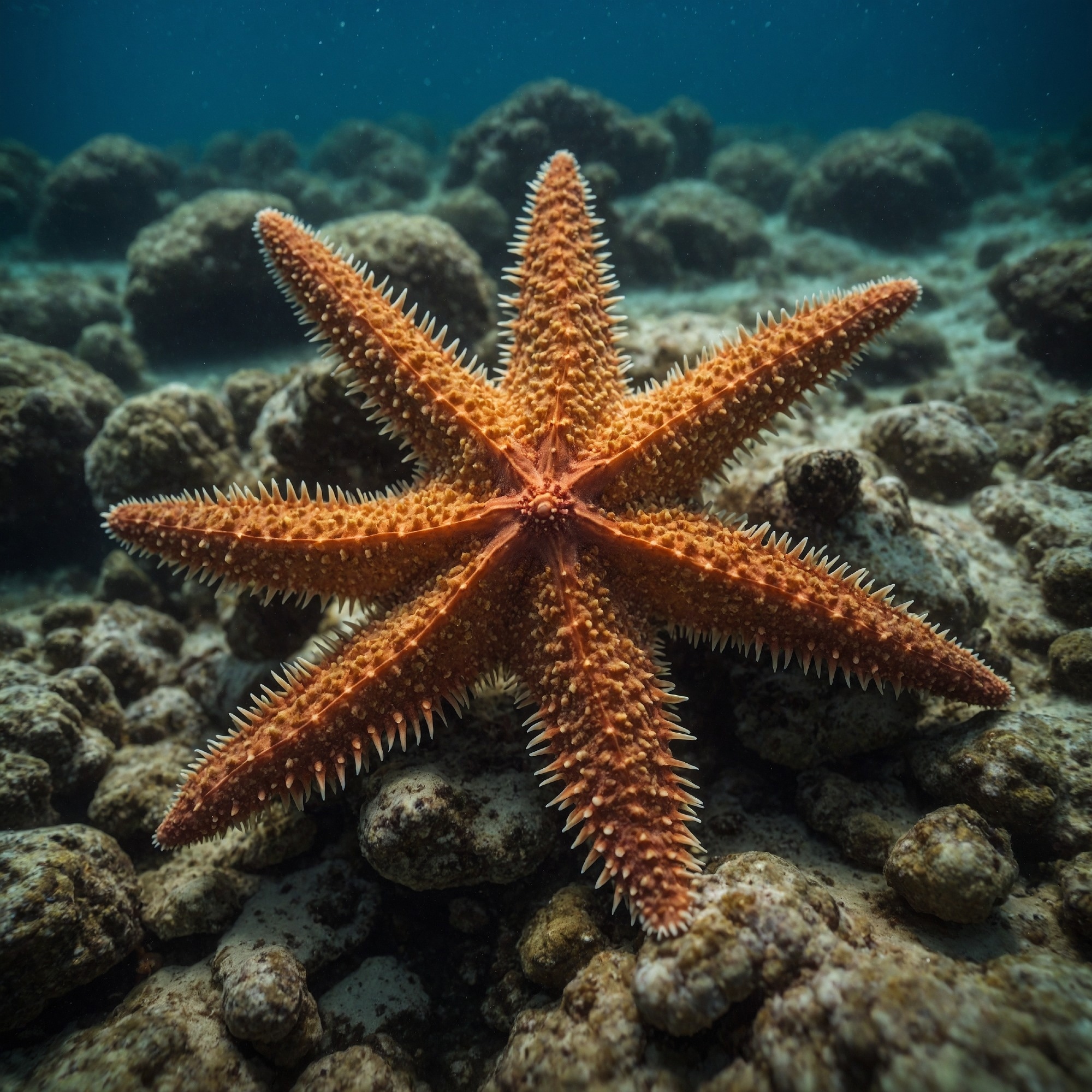A recent article published in Scientific Reports proposed a four-dimensional (4D) morphing structure inspired by the starfish’s unique ability to maintain flexibility and posture while expending minimal energy. The structure has a two-component design, including a thermoplastic mesh and elastomeric jacket to effectively mimic the functions of the starfish's ossicles, mutable collagenous tissues, and derma.

Image Credit: Shahidphotographer/Shutterstock.com
Background
Morphing structures are load-bearing designs capable of altering their shape to adapt to varying operational requirements or external environments. These structures are gaining popularity across diverse sectors, such as aerospace, automotive, and power plants. The 4D concept enables transformations in response to external stimuli like temperature and humidity.
Traditional morphing structures employed standard mechanical joints with rigid separate elements connected to kinematic chains using low-friction joints. In contrast, compliant monolithic mechanisms with flexible elements enabled structural adaptation through deflections.
However, conventional morphing structures necessitate continuous energy input and active control to maintain their shape. Some morphing structures can assume multiple states and retain their shape without external energy. Consequently, bio-inspired solutions are emerging to address the mechanical challenges of morphing structures, primarily focusing on morphogenesis and actuation.
Methods
Samples of the starfish Asterias rubens were relaxed in freshwater, and ossicles were carefully extracted from the aboral regions of the body wall. These ossicles were then stabilized, supported with tissue, and scanned in an air environment using a micro-computed tomography (micro-CT) scanner. The captured scans were later processed using the corresponding reconstruction software.
A commercial polylactic acid (PLA) filament was chosen to print a three-dimensional thermoplastic mesh. The surrounding jacket was made from Smooth-On Dragon Skin 30 silicone resin due to its low viscosity and long pot life (45 minutes). Highly conductive graphite powder was added to the resin to enhance its thermal conductivity.
The mechanical behavior of the prepared materials was examined through a three-point bending test. A 30×60 mm2 mesh sample was used to evaluate the stiffness of the mesh and morphing structures at room temperature and in hot water. Structural stiffness was determined from load-versus-displacement test data, recorded within a linear range of 0 to 2.5 mm displacement at 1 mm/s.
The shape recovery response of the morphing structure was analyzed by securing it to a custom metallic frame (with one-half fixed in place) and submerging it in a hot (78 °C) water bath to trigger thermal softening. A camera recorded this shape recovery process.
Results and Discussion
The thermoplastic component of the morphic structure served a dual purpose, mimicking the load-bearing ossicles and posture-locking mutable collagenous tissues (MCTs) of the starfish. It provided rigidity below the glass transition temperature (Tg), effectively locking a specific shape while enabling shape change by softening above Tg.
The elastomeric jacket around the thermoplastic replicated the starfish's dermis, protecting the mesh from the external environment and preventing leakage during the healing process when the thermoplastic was molten. Additionally, the jacket contributed to the overall morphing structure's shape memory capability.
All mesh prototypes exhibited a largely linear load-displacement relationship in the three-point bend test at room temperature. Their structural stiffness decreased by about 90 % when submerged in a water bath near the Tg of PLA.
Notably, prototypes with greater porosity relative to thickness displayed lower stiffness and faster thermal response, allowing rapid shape changes. In contrast, thicker designs demonstrated higher stiffness and slower thermal response, ensuring robust shape retention.
While structures with comparable porosity and thickness exhibited similar stiffness, the finest mesh displayed a quicker thermal response, attributed to enhanced heat transfer. Overall, over 92 % stiffness reduction was achieved across all designs when transitioning from a hard to soft state, underscoring the structure's adaptability.
The morphing structure maintained an extremely deformed shape without external support and demonstrated a time-dependent ability to passively regain its initial shape. Prototypes with high porosity recovered faster than their less porous counterparts. Furthermore, these prototypes exhibited exceptional self-healing properties in the event of structural failure.
Conclusion
The researchers successfully developed a novel morphing structure inspired by the starfish skeleton's self-locking capability. This structure consists of only two easily fabricated components: a thermoplastic mesh and an elastomeric jacket. In addition to controlled shape change and self-locking, the structure displayed commendable self-healing properties.
The versatility of the proposed morphing structure was demonstrated through a hand-shaped prototype, showcasing the customizable mechanical properties and shape memory behavior of individual fingers. This prototype enabled complex and time-dependent programmed 4D actuation.
The researchers recommend expanding the range of stimuli beyond heat to include light, electricity, and other novel actuation methods. Additionally, exploring alternative thermoplastic-elastomer combinations may yield tailored properties for specific applications.
Journal Reference
Raman, N., Labisch, S., Dirks, J.-H. (2024). A starfish-inspired 4D self-healing morphing structure. Scientific Reports. DOI: 10.1038/s41598-024-71919-w, https://www.nature.com/articles/s41598-024-71919-w
Disclaimer: The views expressed here are those of the author expressed in their private capacity and do not necessarily represent the views of AZoM.com Limited T/A AZoNetwork the owner and operator of this website. This disclaimer forms part of the Terms and conditions of use of this website.